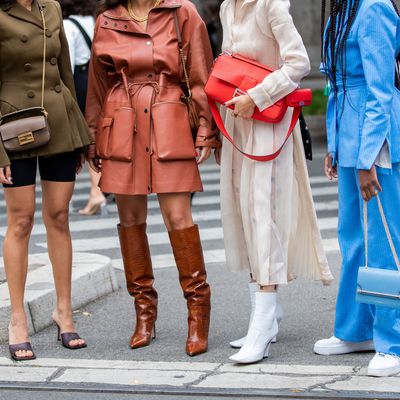
There’s been a lot of talk recently about sustainable fashion, but not a lot of consensus about what it means. Gucci uses carbon offsets to make itself “carbon neutral”; Reformation uses deadstock or recycled fabrics; Stella McCartney uses a faux fur made from corn. When Everlane launched its “no new plastics” campaign, it was met first with praise for using only recycled polyesters and plastics, then with criticism because all polyesters (even recycled ones) still shed microfibers, which end up in our food, water, and rain when clothes are washed. There are so many tactics and not enough evidence about what actually works. But the clock is ticking, so what do we do?
It’s too big of a question to answer in a single blog post, of course, but I’m intrigued by the topic of the Study Hall conference next week: climate positivity. Study Hall hosts talks on sustainability throughout the year, with one big global summit annually. This one asks us to envision a world in which fashion is not only not actively harmful to the planet, but actually beneficial. In light of the Everlane debacle, it’s a tall ask.
Céline Semaan, the founder of Study Hall and its parent company, Slow Factory, says that even clothes made from new materials can be climate positive if they’re circular or “will act as nutrients for the soil.” For her, this is more than just a thought exercise; it’s a way of figuring out how to marry fashion’s whims with hard scientific evidence. “We felt the need to define what we mean by sustainability,” she said. “We’re trying to help companies understand that whatever they do needs to be measured, and needs to have a scientific approach applied to it.”
Among the conversations at the January 31 conference will be one on whether leather is really sustainable, featuring the biofabrication company Bolt Threads, which makes lab-grown fabrics. Scientist Robin Bell will talk about climate offsetting, a divisive issue in the fashion industry right now. The most star-studded panel is on women in sustainable leadership, featuring panelists Yara Shahidi, Tina Knowles, and “Little Miss Flint” activist Mari Copeny, among others. The day ends with a conversation titled “We Are Not Sustainable” with executives from Timberland and G-Star Raw. A cynic could look at all of this — at sustainable fashion in general — and ask, “Why not just close down the industry?” Surely the world has enough clothes. But Semaan sees the good in fashion, even though she recognizes all of the harm it does.
“Austerity is not the answer. Even if we contract ourselves, we will still be emitting carbon dioxide,” she says. “For us to problem-solve effectively through creativity and science, we’re not going to be able to address that with austerity, this level of shame. People tell me, ‘I feel powerless,’ and I think that’s because they approach it through fear. I’m not saying, ‘Go buy clothes, go live an extravagant lifestyle,’ but if you approach a problem through fear, you contract and limit yourself.”
Is there a version of the fashion industry that’s good for the world, not just neutral? “Absolutely,” she says. Not convinced? Or just want to learn more? Study Hall is free and streaming on January 31, and a few tickets are still available here.




